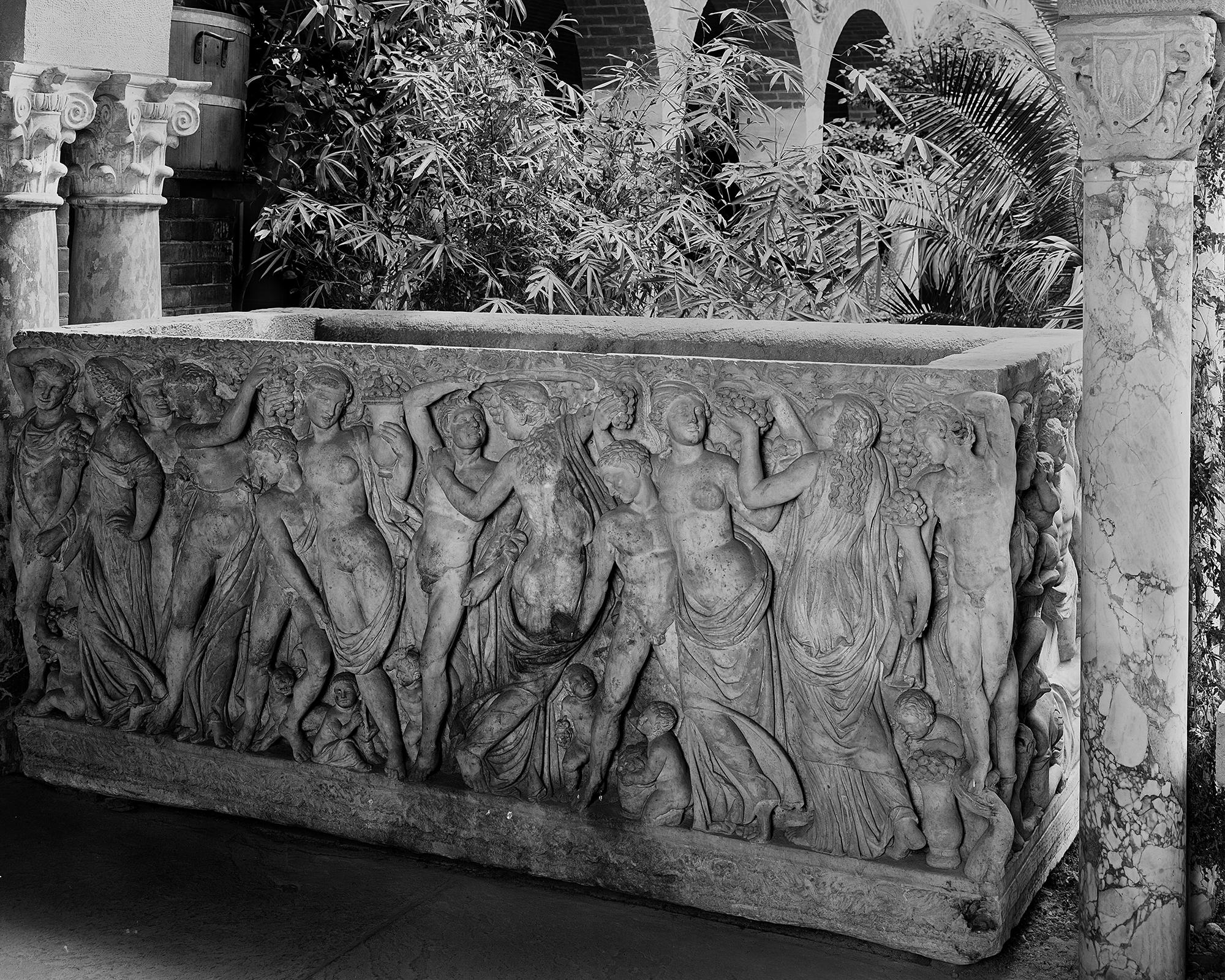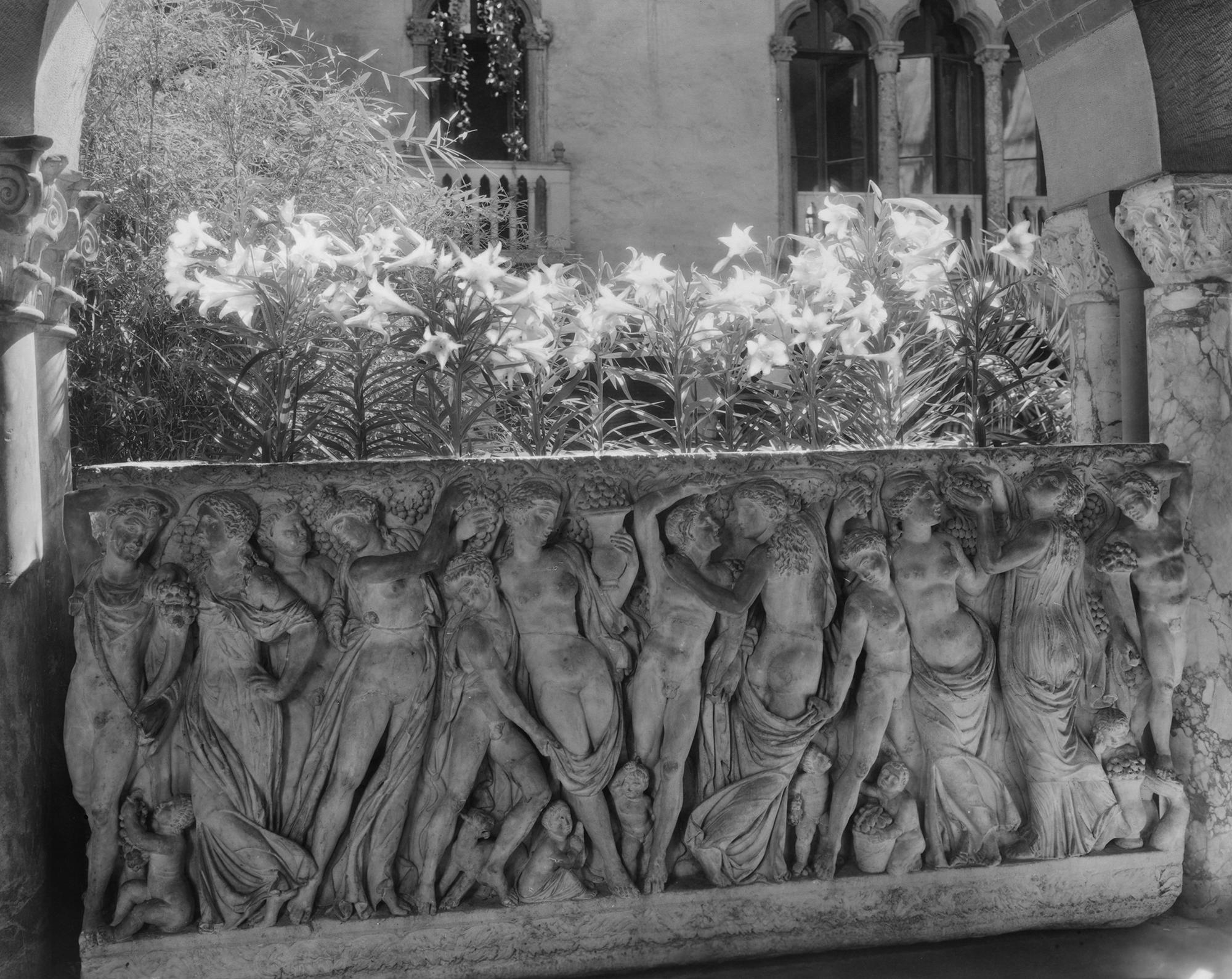In 1897, American scholar Richard Norton wrote to Isabella Stewart Gardner encouraging her to purchase an extraordinary sarcophagus:
It is really very lovely & I do not think even Boston would object to its frank but slight sensuality.
Dating from around 225 AD, the outside of the sarcophagus is carved with intermingled figures of maenads and satyrs, followers of Dionysus, the God of wine. The figures harvest grapes and revel in each others’ company. The lid of the sarcophagus, which might have given some clues about the person, or persons, entombed inside is lost or destroyed. Isabella responded to Norton agreeing to the purchase, and it became one of the most important works in her collection.
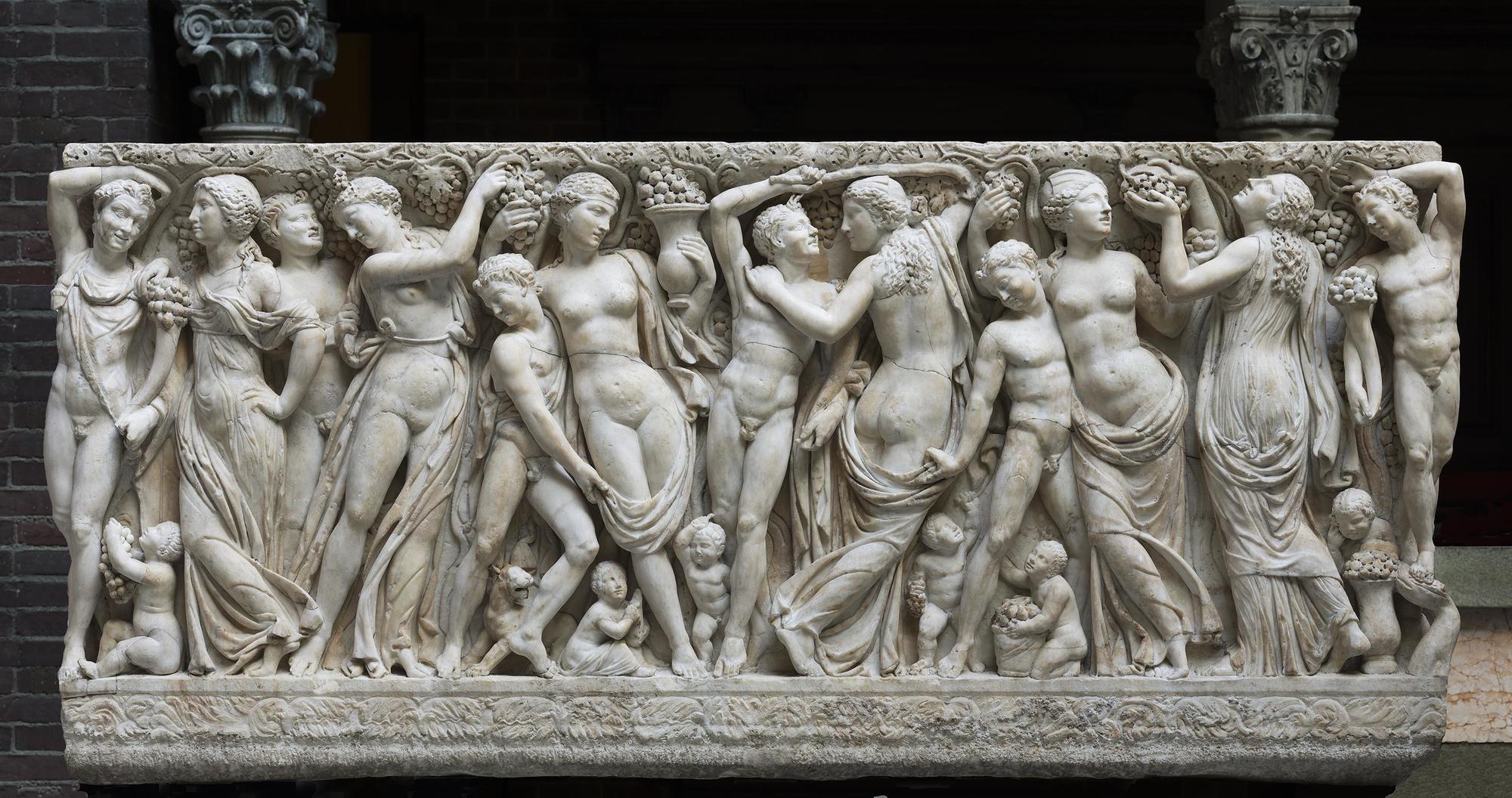
Isabella Stewart Gardner Museum, Boston (S12e3)
Roman, Farnese Sarcophagus with Revelers Gathering Grapes, about 225. Marble, 163.2 x 62.2 x 26.7 cm (64 1/4 x 24 1/2 x 10 1/2 in.)
Four years later, the architect Willard T. Sears, hired by Gardner to help design her museum, wrote in his journal, “she sent a messenger for me to meet her . . . on a matter of great importance. On reaching there, she said she wanted my advice about the locating of the large sarcophagus she had just had un-boxed.” While no other details of their meeting were recorded, the prized Farnese Sarcophagus was ultimately installed in 1901 between columns in the courtyard of Gardner’s museum.
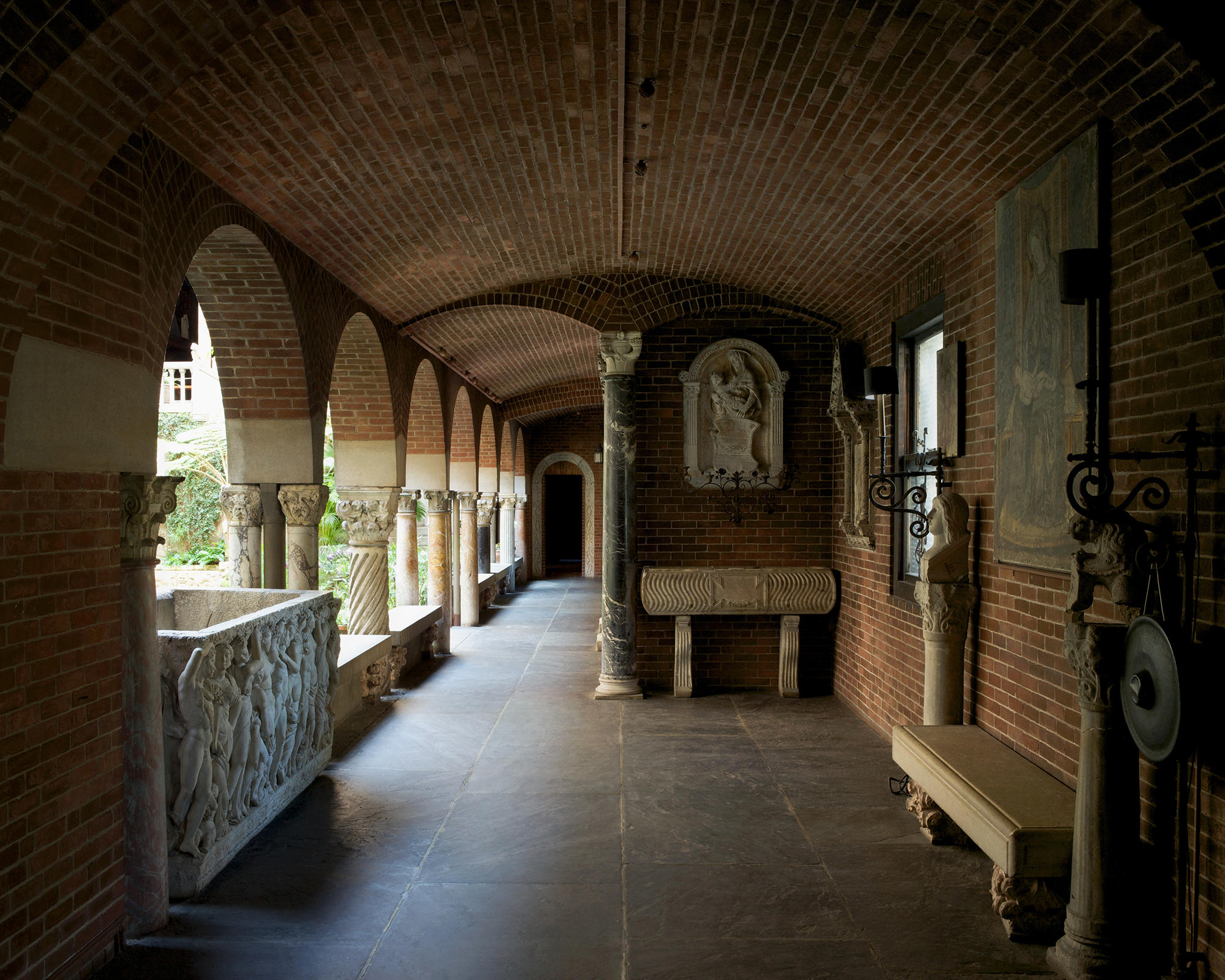
The West Cloister with the Farnese Sarcophagus, 2010
Isabella Stewart Gardner Museum, Boston. Photo: Sean Dungan
It remained in that spot until this 7500 pound piece of marble was temporarily moved for conservation and the exhibition Life, Death & Revelry in 2017. Through close looks and scientific analysis, exciting discoveries were made by our conservation team, revealing much about the original appearance and history of the sarcophagus.
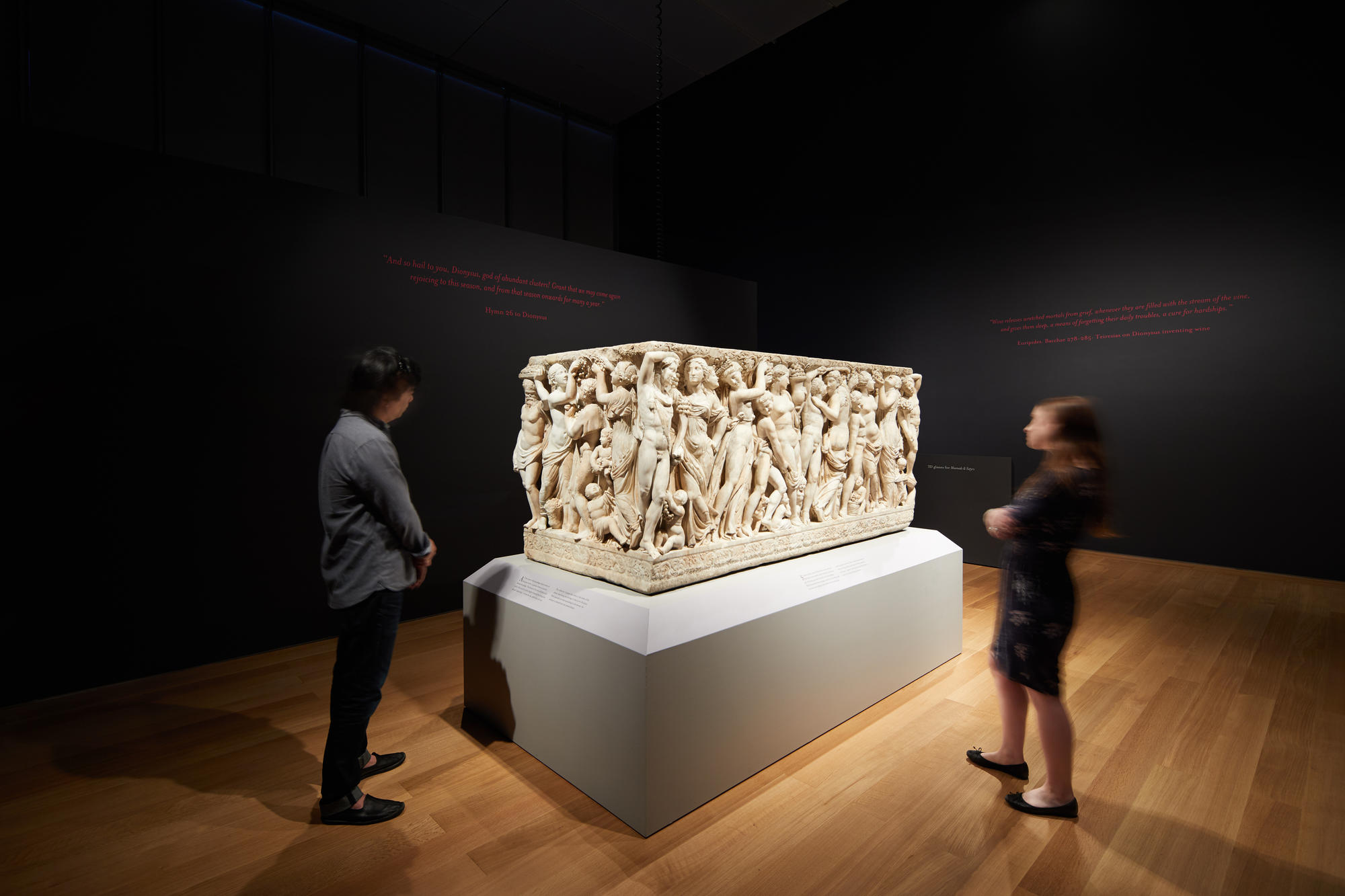
The exhibition Life, Death & Revelry in Hostetter Gallery at the Isabella Stewart Gardner Museum, Boston
Exhibition and Graphic Design by IKD. Photo by Benjamin Kou
The sarcophagus was carved from a single massive block of white marble and brightly painted. Amazingly, despite being subjected to harsh conditions for centuries and multiple restorations, small traces of original pigments and gilding remain visible on its surface. The ancient pigments that have been identified include pink, orange, and red. But, the most prominent color found is blue, specifically Egyptian Blue, thought to be the first man-made pigment. One of the methods our conservators used to positively identify this pigment was a digital imaging process called visible-induced infrared luminescence or VILS for short. Under specific conditions, the Egyptian Blue pigment appears white in the digital image.
A detail of the Farnese Sarcophagus showing blue pigment in visible light and visible-induced infrared luminescence
The sarcophagus would have been placed into a tomb and then buried. Discovered over a thousand years later, in the 16th century, it was then positioned into a garden where it remained for several more centuries. Both the burial and outdoor exposure caused damage that required multiple restorations over the years. They include added sections of marble where pieces have broken off. Using gamma radiography (like an X-ray), conservators could see that metal pins are secured into holes drilled into the ancient segment and restoration pieces.
The pins in the Farnese Sarcophagus revealed under gamma radiography
In other areas a previous restorer recarved sections that were heavily eroded. Gardner conservators found that under ultraviolet light, the original surfaces appear green and the recarved areas appear purple.
The side of the Farnese Sarcophagus in visible light and ultraviolet light
In another section, our conservators discovered the entire figure of a child is missing, most likely removed due to its poor condition. The child’s right fingers were revealed along the top of the basket in the same gesture seen in a 17th century drawing of the sarcophagus.
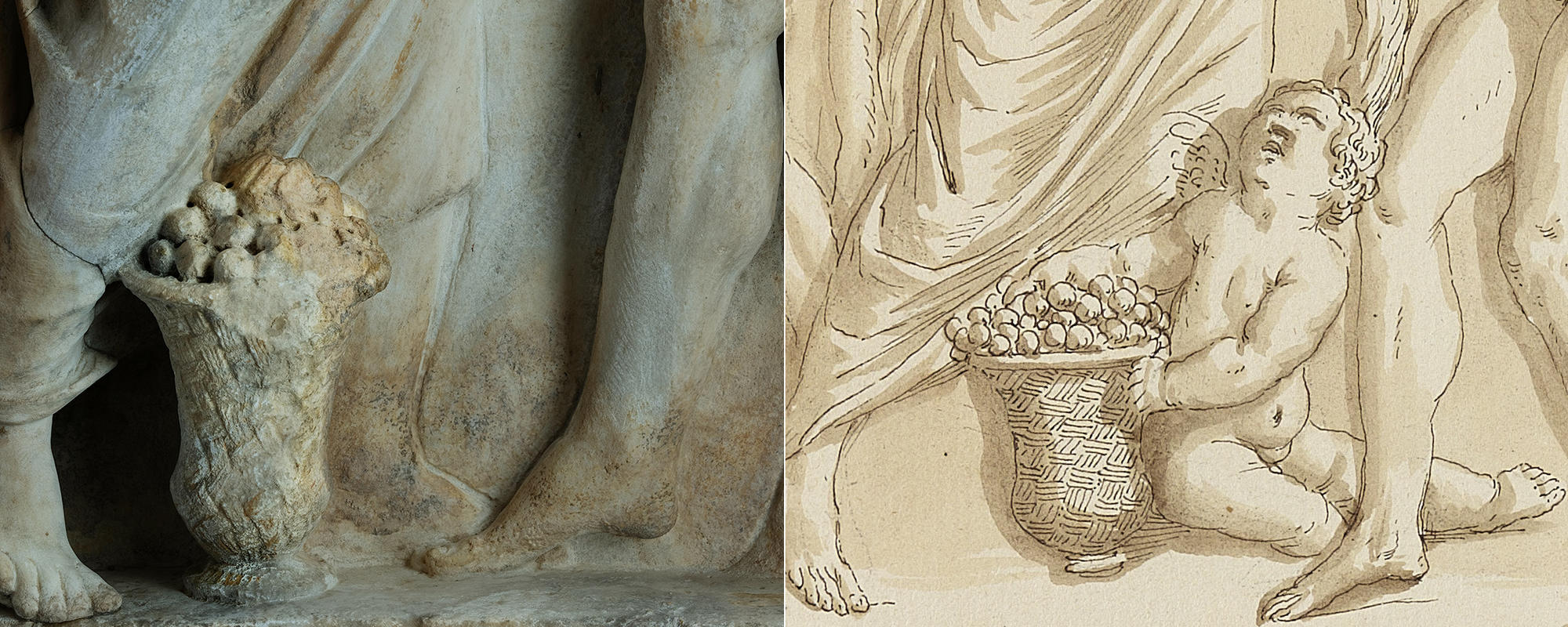
Detail of the Farnese Sarcophagus (left) and detail of Pietro Testa’s Copy after the Farnese Sarcophagus Ends, 1633–37 (right), showing the missing baby
Drawing from the Royal Library, Windsor
The earliest image of the sarcophagus in the Gardner collection dates to 1903. The black-and-white photograph gives some clues to the condition of the piece when it was first displayed. Areas that appear distinctly dark are likely black crusts resulting from pollution. A later photograph, dating to 1932, shows that, while there are still some contrasting dark and light surfaces, the most distinct dark area is gone –indicating that it had been cleaned. Documentation in the conservation files revealed that the front was cleaned again in 1991. These cleaning campaigns resulted in a bright, more uniform surface on the front but there is no evidence that the other three sides received more than general dusting, leaving them gray, water-stained, and spotted with black crust.
The conservators’ goal was to balance the appearance of the other three sides with the front as the 2017 exhibition would be the first opportunity to view the sarcophagus out of Gardner’s courtyard in over 100 years. This required multiple cleaning methods including steam cleaning and using lasers while also carefully avoiding original pigment and gilding.
The Farnese Sarcophagus before and after the 2017 cleaning
The secrets of the sarcophagus revealed through both the study and conservation treatment have helped us to have a better understanding of the sculpture’s history and manufacture, but there is always more to learn!
You May Also Like

Watch the Conservation Team at Work
Art Conservation Behind the Scenes

Buy the Book
Life, Death & Revelry: The Farnese Sarcophagus

See how the Farnese Sarcophagus Inspired a Birth, Death, and Ancestral Healing Arts Practitioner
Luminary Lens: Luana Morales






